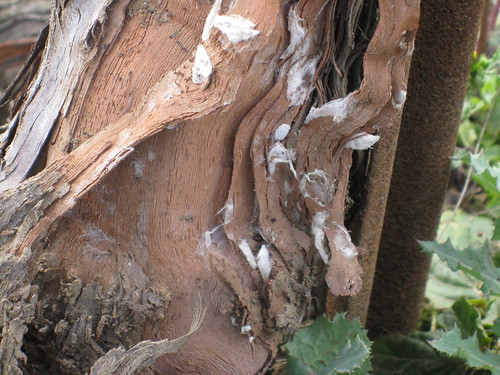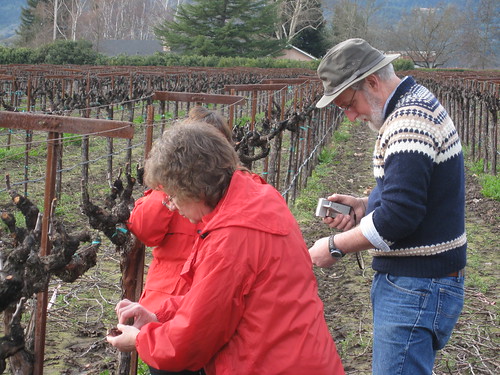
Close up of damage on a grape cluster with EGVM webbing and the head of larva emerging. Photo courtesy of the Napa County Agricultural Commissioner’s Office.
Last fall, the results of trapping for the European Grapevine Moth (Lobesia botrana or EGVM) in California were recounted during a conference call for the partners working to eradicate this invasive insect: zero, zero, zero, one moth.
We’ve gone from more than 100,000 EGVM trapped in 2010 to just one in 2014. This success makes the EGVM detection and eradication partnership one of the most effective programs for the Animal and Plant Health Inspection Service (APHIS), the California Department of Food and Agriculture (CDFA), county departments of agriculture, University of California Cooperative Extension (UC Coop), and growers in the last decade.
We’ve come a long way, but our work isn’t finished yet. One of APHIS’ top goals is the complete eradication of EGVM from California in the next two to three years.
EGVM was first detected in Napa County, California in 2009. Subsequent surveys detected EGVM in 11 counties in the State. The detection of this pest put fruit crops worth more than $5.7 billion at risk and threatened to close valuable export markets for U.S. grapes and stonefruit around the world. In 2009, 90 percent of U.S. grape production came from California, so the finding of EGVM was especially concerning to grape growers, as well as the wine industry.

County of Napa inspectors looking for EGVM early in 2009, before we knew how big the infestation was. The damage in the Wicker vineyard and several others indicated the level of damage we could anticipate if we did not take action against this pest. Photo courtesy of the Napa County Agricultural Commissioner’s Office.
Napa Valley grape producer Ron Wicker recalled the impact the EGVM had on his crops. “In one week, our crop went from isolated clusters of rotting grapes to spreading through the entire vineyard. We lost 11 acres of chardonnay – all 60 tons of fruit.”
Greg Clark, Napa County Agricultural Commissioner said “in Napa County, wine grape production accounts for 99% of annual crop production, or over $656 million in 2013. This translates into approximately $14 billion in economic activity for the county. Napa is world renowned and we have to be good stewards of the crop, wine, and image.”
Faced with this enormous threat, we and our partners in California moved quickly. We designed an eradication program that would produce results by closely involving growers and the community. The plan called for growers to carry out pest treatments, while state and county partners set traps and lures for detection purposes and reported findings. We also relied on the excellent support of the EGVM Technical Working Group, which met regularly to provide APHIS and its partners with the best science and data to combat EGVM.

Peeled piece of bark with lots of EGVM pupa. Photo courtesy of the Napa County Agricultural Commissioner’s Office.
“Another key reason for success was the grower liaison role that was created early in the program,” said Nick Condos, Chief of the EGVM Quarantine Program for CDFA’s Plant Health Programs. “The grower liaisons were critical to conveying information to growers and ensuring they understood the voluntary treatments planned.”
“Growers worked closely with the liaisons and cooperated fully with both the quarantine and treatment plans,” Condos continued. “The reason WHY is because the pest was doing significant damage immediately. We were dealing with a potential game changer for how industry exports and operates.”
The quick response, sound scientific strategy, hard work by growers and industry, and the support of the community has produced fantastic results. We have eliminated EGVM from nine of 11 counties, and more than 80 percent of the acres that were quarantined have been declared free of the moth.
Now, with one moth detected in 2014, success is even closer. Some day soon, we’ll get the news that we’ve accomplished our goal: no more EGVM in California.

At a field day organized by the University of California Cooperative Extension (UC Coop) and the County of Napa, UC Coop staff show pest control advisors how to look for EGVM pupa hidden underneath the bark at a Wicker Vineyard Management vineyard. Photo courtesy of the Napa County Agricultural Commissioner’s Office.
Note – April has been designated as Invasive Plant Pest and Disease Awareness Month by the USDA



One Response to From Over 100,000 to 1: Partners Band Together to Beat the European Grapevine Moth – from the USDA